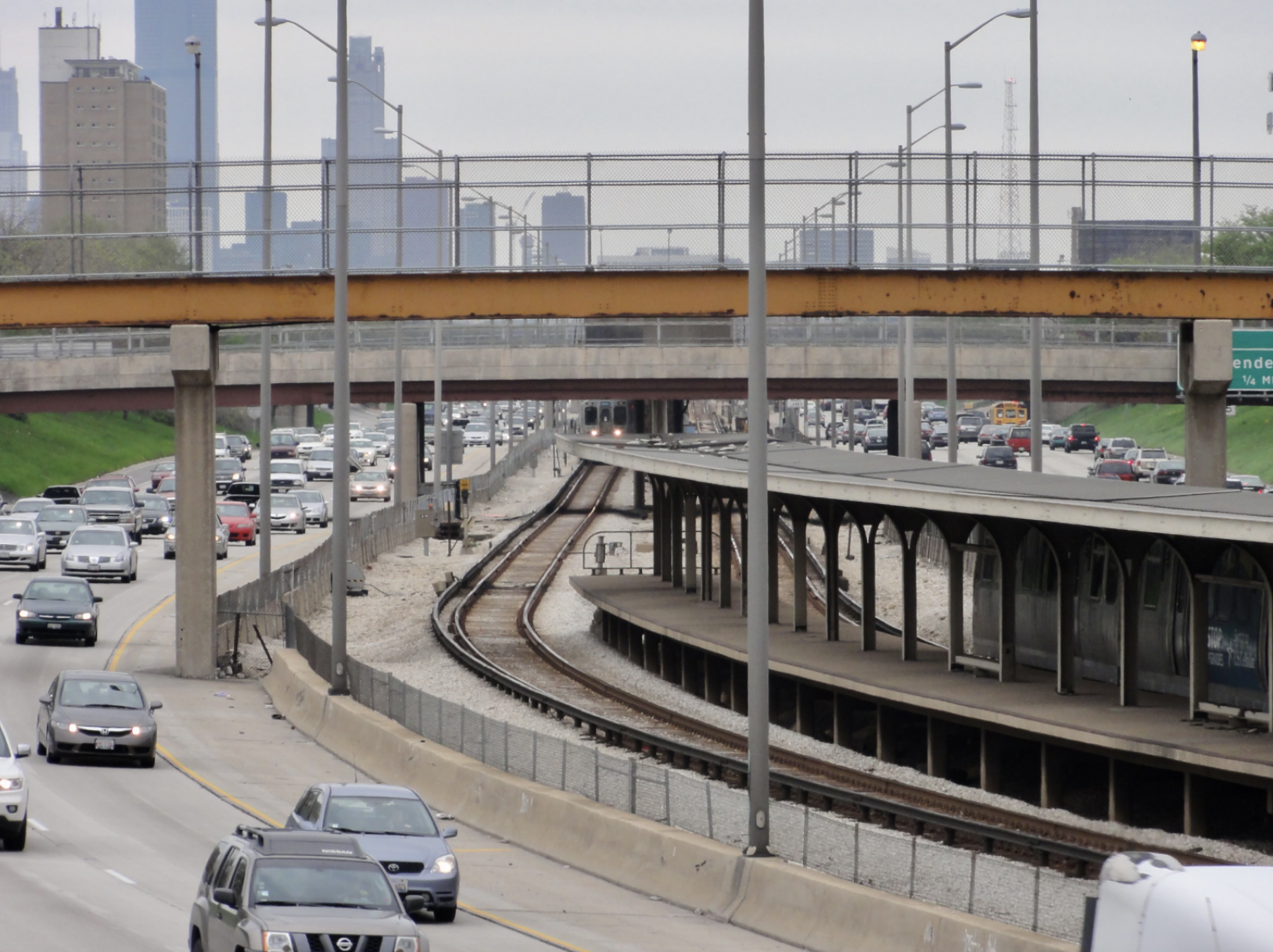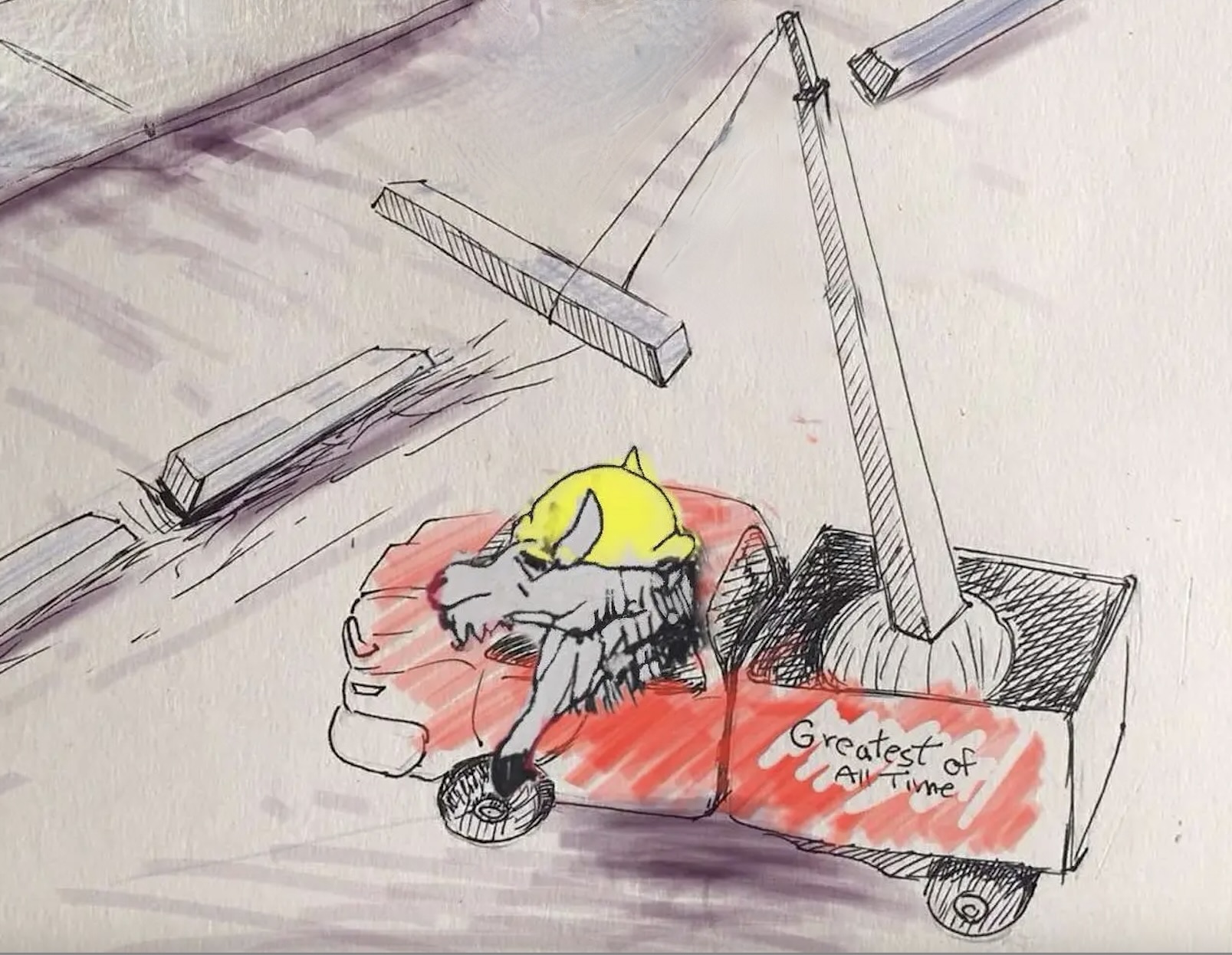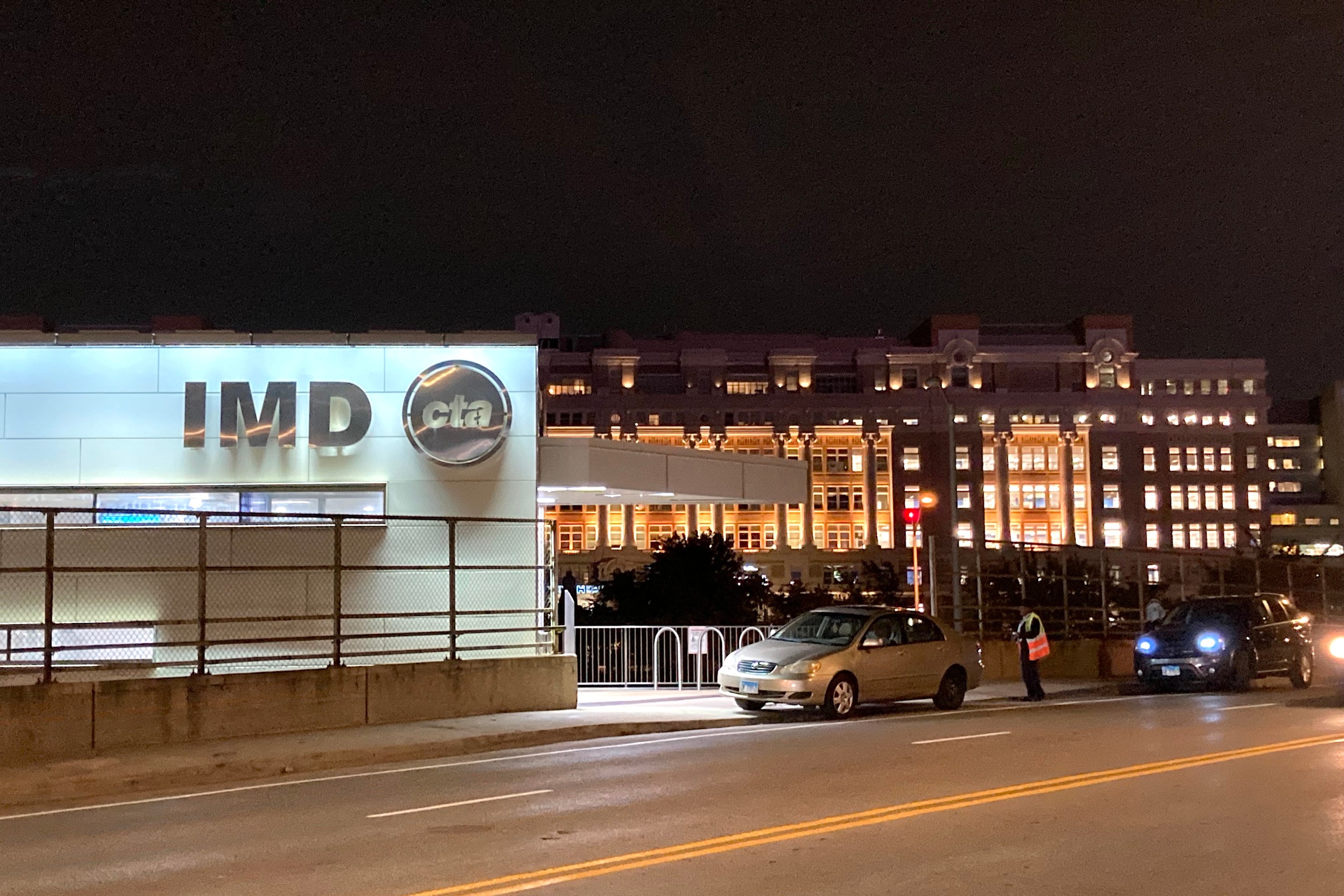Transit Future Slowly Building Coalition to Fund Expanded Transit
4:16 PM CDT on October 13, 2014
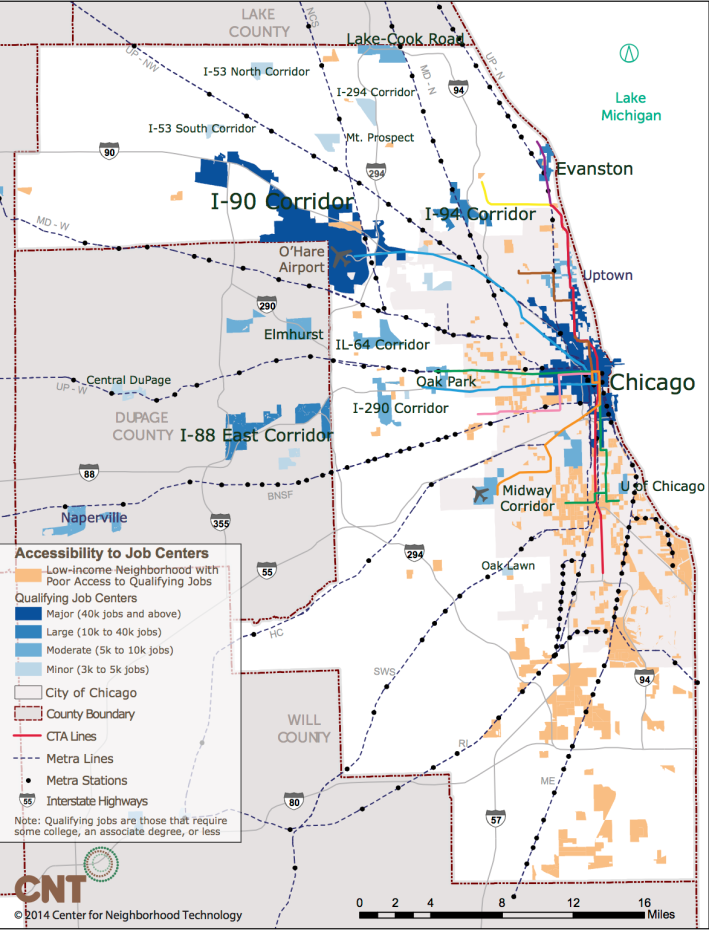
The Transit Future campaign sure did arrive with a bang. Mayor Rahm Emanuel and Cook County President Toni Preckwinkle both spoke at its April announcement, which was accompanied by a splashy map and website. It seemed like a huge expansion of the region's transit network was closer than ever, once Cook County and Chicago officials rallied around the idea (imported from Los Angeles) to use local taxes to leverage big dollars for projects. But ever since then, though, its backers -- the Center for Neighborhood Technology and Active Transportation Alliance -- have been fairly quiet.
CNT vice president Jacky Grimshaw and Active Trans executive director Ron Burke recently gave a glimpse into what's next for Transit Future at DePaul University's Chaddick Institute. Ever since its launch, 12 of Cook County's 17 commissioners have signed on to the campaign. Several of them told Grimshaw that the campaign should also meet with mayors and other elected officials in their districts, so CNT has expanded its outreach accordingly.
"It's important to build a coalition," Grimshaw said, "to share the message and get the electorate involved."
Grimshaw was candid about the progress of Transit Future since April, saying she had asked Cook County President Toni Preckwinkle to include a new transit fund within the FY2015 budget proposal. "But Toni had a bigger nut to crack," Grimshaw said, "and that's pensions." (The current, election-year budget also, conveniently, does not include any new taxes.) Grimshaw added, "The best we can hope for now is the 2016 budget."
The Transit Future map shows many new and extended 'L', Metra and arterial rapid bus routes. Grimshaw explained that "we didn't just make up these lines." Many of them were on the wish lists that transportation agencies, departments, and other governments had submitted to the Chicago Metropolitan Agency for Planning, for potential inclusion in the GO TO 2040 comprehensive regional plan. The routes "were vetted, part of a public engagement process, and screened," she added. "What these lines lacked is funding" (unlike some other projects), and so they weren't included in the final GO TO 2040 plan.
Transit Future is developing a compelling public case for why these transit lines are needed. Campaign manager Ronnie Harris said that they're racing to develop a report clearly showing the benefits and return on investment "of going ahead and doing this." The report, he said, will "outline the benefits of [the region] buying into Transit Future."
Cook County certainly could use more extensive transit service. County residents take transit for just seven percent of all trips, Burke explained, because it's inconvenient for most of their trips. Transit service just isn't available, or is infrequent, in the areas where most county residents work. Decades of sprawl have pushed jobs from downtown Chicago to newer centers, around O'Hare Airport and to suburban corridors in the north, northwest, and west suburbs. Getting to jobs in those locations is impractical by transit, since these transit deserts see only infrequent Pace buses and practically nonexistent reverse-commute Metra service to faraway stations.
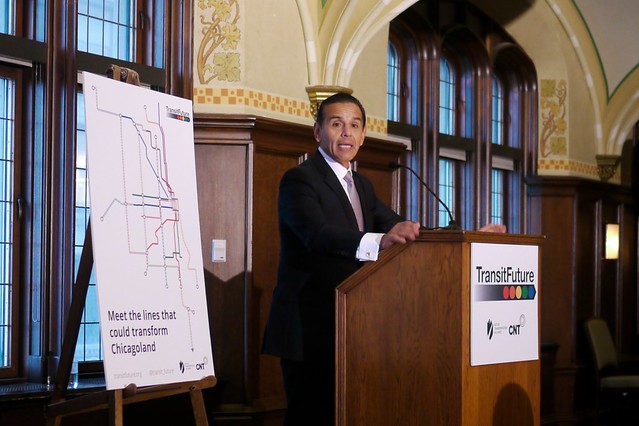
Yet better transit could be transformative for these corridors, most of which are either located within or adjacent to Cook County. Better transit would cut travel times and travel costs for lower-income workers, Grimshaw said: "people are putting so much of their household income into cars, taking away the other things you can do with [that money]."
She added that "our current transit system is getting more and more costly to invest in," as growing maintenance needs exceed available funding. The result has been frequent breakdowns, subpar and unreliable service, lackluster growth around transit, and excessive household spending on transportation. Burke pointed out that, among peer cities like Boston, San Francisco, Philadelphia, and New York City, "we are the last in ridership growth, system expansion, and building transit-friendly development." Chicago is also second to last in per capita spending on transit -- behind Los Angeles, which will soon surpass us.
Burke said "our roads are not going to expand to sufficiently meet the needs of two million more residents," the area's projected population growth by 2040. 80 percent of all trips today are made by car -- and if two million more residents also make 80 percent of their trips by car, "that’s a lot of cars, a lot more congestion," he said.
Harris said that CNT is also researching potential models to funding Transit Future. "Any option you can contemplate for raising funds is on the table," he said, and as yet the campaign does not advocate any particular funding stream. He expects that the county commissioners will come up with their own solution.
Other challenges that Grimshaw identified included convincing people that Cook County can actually "live within its means," a general distrust of political promises, and the challenge of raising revenue for infrastructure amidst a still-shaky economy.
The state's continued push for more exurban roads certainly doesn't help, either. Grimshaw suspects that, as the Illiana Tollway moves forward, a "bad bill" will inevitably appear to lavish millions more upon the private operator. "Call your legislator and ask them to vote 'absolutely hell no' " if it comes up, she asked the audience.
The most important challenge, though, is to spread the word and build grassroots support. Burke took a cue from the Onion, pointing out that most drivers support transit for other people and said that most "drivers care about transit, too. They're fed up with the roads."
"We need to come to a 'state of good repair,' as well as a 'state of good convenience.' We need to care about our current customers as much as our future customers," Burke said.
Stay in touch
Sign up for our free newsletter
More from Streetsblog Chicago
City announces $2M federal grant to address harms caused by I-290 by improving walk/bike/transit access
The Mayor's Office says the money will fund "improvements for people walking and bicycling on existing streets and paths surrounding and crossing the corridor."
Today’s headlines for Tuesday, April 16
CDOT reveals that it spent nearly $700K to install concrete protection on Doty bike lanes, and then remove it
Some of the former Doty bikeway curb protection was relocated to CDOT projects at Broadway/Aldine and on Wrightwood.
TLC in the IMD: the Illinois Medical District Commission releases bike and pedestrian safety plan
Five proposed projects would improve walking and biking safety - and beautify - the IMD.
